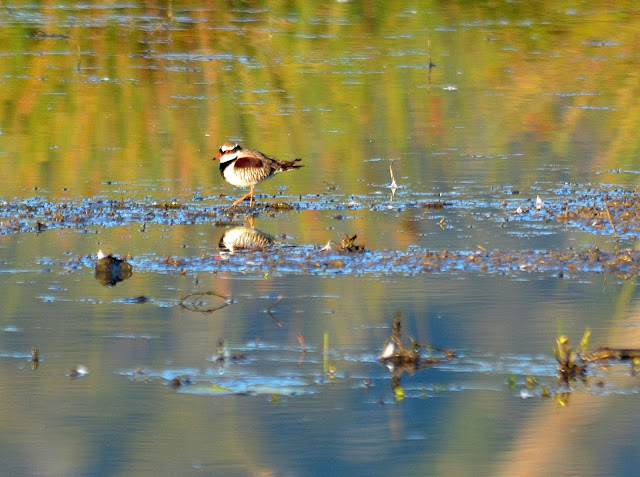 |
The Flying Duck orchid (Caleana major) ----- the orchid flower is about 15mm long on an upright stem of 300mm ---- the flower is pollinated by insects , favored by male Sawflies ----- grows in almost pure sand ---
flowers winter to spring ------ reliably sighted on the sand track , near Seary's creek. --- this photo verifies the name "Flying Duck" ----- |
The traditional August club outing is to find the Wallum native wildflowers. This year we searched the areas off Rainbow Beach road. At the end of the day I believe quality and quantity compared to other years was somewhat down. The massed white flowers of the Wedding bush (Ricinocarpos pinifolius) were not as prevalent as usual. The orchids, native to the Wallum area were difficult to locate. The photographs on this page highlight the beauty that surrounds this area, while there may be less than we have seen other years, the species are still around.
 |
| White Donkey Orchid (Diuris alba) |
Wallum Sun Orchid ( Thelymitra purpurata) - Flowers were hard to find due to
cloudy conditions - These beauties need the warm sun for many hours to open.
Queensland Wax Flower - ( Philotheca queenslandica ) - formerly Eristemon myoporoides subsp. queenslandicus. This wonderful shrub which grows to 1 metre never ceases to delight. Can be white to pale pink. It is aromatic, with it's five petals is easy to identify.
 |
| Geebung (Personnia virgata) ---- an erect shrub to about 2 metres with narrow lime green leaves ----- the small yellow flower nestle in the exiles of the leaves ---- producing small round green edible fruit. |
Forest Boronia ( Boronia rosmarinifolia) - Boronias are distinctive, they all have four petals - This one is a woody shrub growing to 1 metre.
 |
| Phebalium woombye - This was one of the spreading shrubs found to be almost finished flowering. - was lucky to get this one with the new flowers, spent flowers and seeds in the adjacent area. Common name is Wallum Phebalium. |
 |
| Patersonia glabrata (Native Iris) - The Patersonia were very prevalent on the day. Sericea, and Fragilis were flowering extensively also. However this particular plant looked spectacular against the grey litter. |
 |
| Vanilla Lily ( Sowerbaea juncea) - This clumping lily shows its value this time of year. They were seen throughout the day, wherever the club members ventured. |
 |
| Bladderwort uticularia lateriflora. - These plants survive in poor nitrogen, difficult soils. This one grows to approx. 10 cm. high - the purple flower is insect attracting - the bee found it attractive. |
 |
| Banksia aemula (Wallum banksia) - This Banksia is prominent in the Wallum landscape. It's growth is generally gnarled and twisted. Many of the Banksia flowers were spent on the day, growing into their very picturesque seed pods. |
 |
| Fungi - Ganoderma steyaertanum (Steyaert's Bracket) - This semi-circular kdney-shaped bracket eye-catching on the rough grey bark of the large tree. |
 |
| Coastal Coral Fern (Gleichenia mendellii) ------ this fern grows very well on the bank of Seary,s creek near the rest area.----- the water is crystal clear and not readily visible from the road. |
 |
| Black-fronted Dotterel. - These little birds were taking advantage of a freshwater lagoon at Kia Ora. Birds were sharing this spot with Jacana, Black Duck, Pelican, to name a few. This bird is 16-18 cm. |
 |
| Pacific Black Duck - These ducks were sharing the lagoon as above. |
 |
| Latham's snipe also known as Japanese snipe. This bird is a migratory snipe of the East Asian-Australasian Flyway, The entire population migrates and spends the season in Eastern Australia. These birds will return to Japan, Russia and East Asia to breed. |
 |
| Scarlet Honeyeater - This is a male - approx. 11cm. |
 |
| Spectacled Monarch - This bird has another name Spectacled Flycatcher - approx. 15cm. |
 |
| Silvereye - This was taken in the Mullins Creek area enjoying the nectar on the Native Grass Tree. |
Contributor; Lionel Muir


